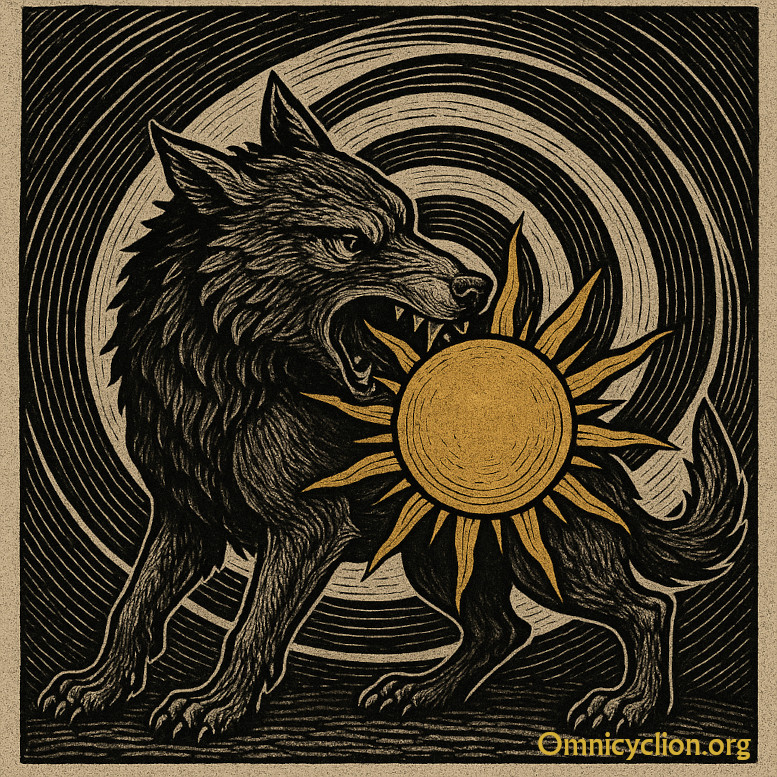Antimony: The Wolf and the Work of Transformation

Antimony in Classical Alchemy
Among the substances revered by the alchemists of the Middle Ages and Renaissance, few carried such a paradoxical aura as Antimony. Most often encountered as the mineral stibnite (Sb₂S₃), it became both a poison and a cure, a destroyer and a purifier.
Alchemists called it the Wolf of Antimony. This wolf devoured gold when fused with it, only to later return the metal in a purified form. For the adept, this was more than metallurgy: it was a spiritual allegory. The wolf symbolized the untamed, animal aspect of human nature—the ego with its desires and shadows. To pass through the jaws of the wolf was to endure trials, purgation, and suffering, after which the soul could re-emerge clarified, like gold refined in the fire.
Antimony was also central in the iatrochemical tradition of Paracelsus, who experimented with it as a medicine. Though toxic in careless doses, its emetic and purgative powers symbolized the cleansing of both body and soul. Thus, Antimony became a threshold element—dangerous yet transformative, an agent of both death and rebirth.
The Omnicyclic View of Antimony
Within the Omnicyclion, Antimony carries a resonance that echoes this classical legacy but extends it into the sacred geometry of cycles. Antimony embodies the Wolf Phase of transformation: the moment in the universal rhythm where what is impure, stagnant, or falsely secure must be broken down.
In the sacred sequence -1-8-4-2-, Antimony aligns with the force that ensures that the cycle cannot become corrupted by false permanence. Just as the Wolf devours gold to return it in a clarified state, so too does the Omnicyclic current consume that which clings to illusion. In this sense, Antimony is not an enemy but a guardian of the Work—a necessary destructive power that serves the higher order of renewal.
The Omnicyclic tradition recognizes in Antimony the lesson that trial is transformation. Just as the alchemists taught that the wolf must swallow the king before the king can be reborn in glory, so too must the human soul face its own wolf—its trials, pains, and losses—before it can awaken to its identity as the One Who Is All Things.
A Living Symbol
Today, Antimony remains both literal and symbolic:
- In chemistry, a metalloid at the border between categories.
- In history, a mineral of poison and cure.
- In Omnicyclion, a fractal archetype of the Wolf, guardian of the universal cycle of purification.
When the wolf appears—whether as suffering, confrontation, or dissolution—we remember Antimony. The wolf devours only to return what is true, stripping away what cannot endure.
Thus, Antimony remains a guide: not a final substance, but a stage, a reminder that even destruction can be sacred when it serves renewal.
The Eternal Pill of Antimony
A family once of stiffest pride,
With noses turned to heaven wide,
Inherited a curious prize—
A gleaming bead of wolfish guise.
This pill, of antimony cast,
Would purge their manners, oh so fast.
Each generation took its turn,
And oh, the lessons they would learn!
The haughty uncle, full of airs,
Was sent at once to humble stairs.
The aunt who scorned the village poor
Came racing, lighter than before.
From father down to daughter small,
The pill was shared amongst them all;
And when its journey reached the end,
They’d wash it clean and lend again.
So passed the years, and pride was tamed,
The “Wolf of Antimony” famed.
No rust, no rot, it never died—
It only stripped away their pride.
And thus the clan grew kind and free,
Relieved of pomp and vanity.
They blessed the wolf, they blessed the pill,
That cured their manners—and does still